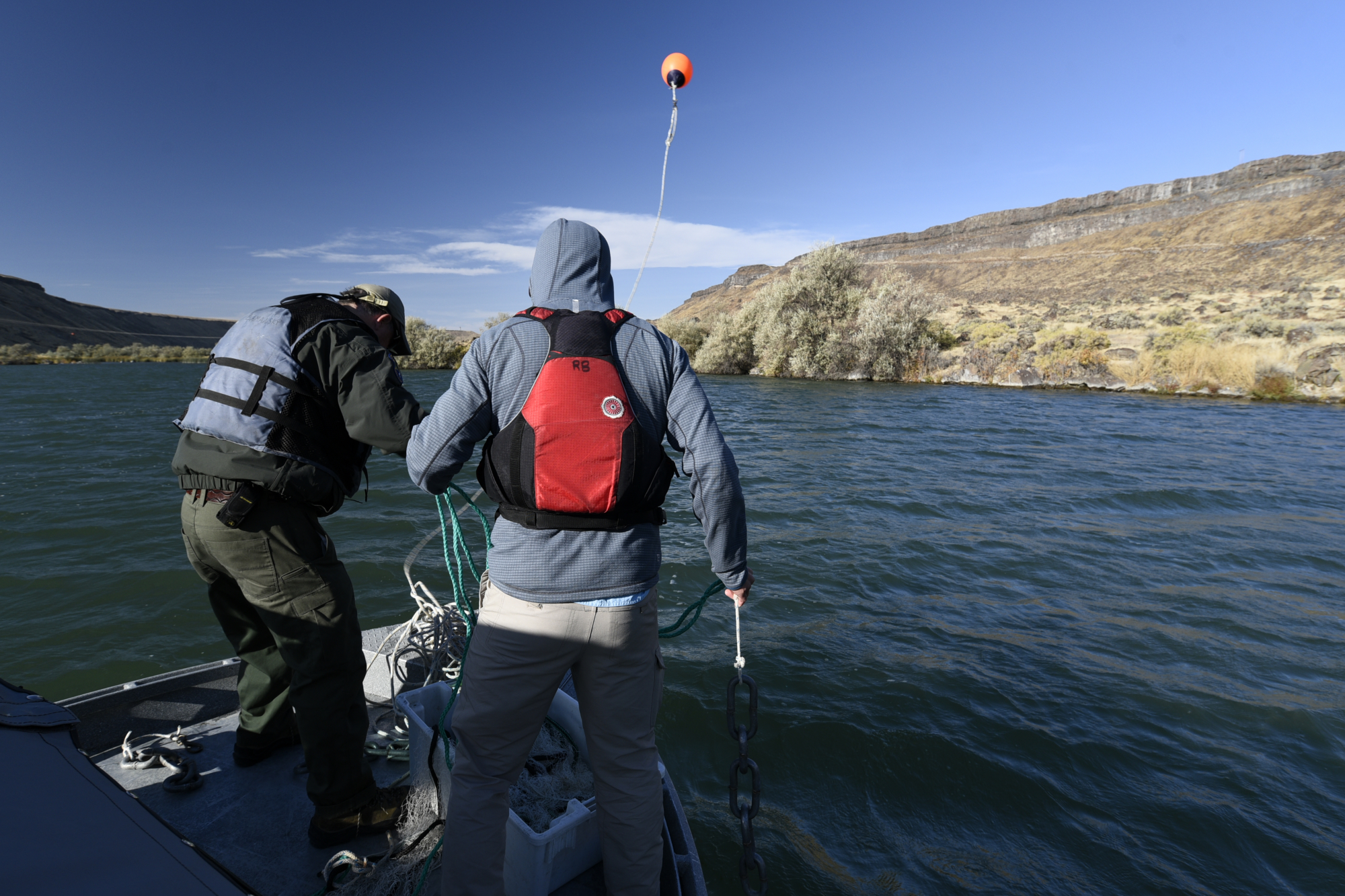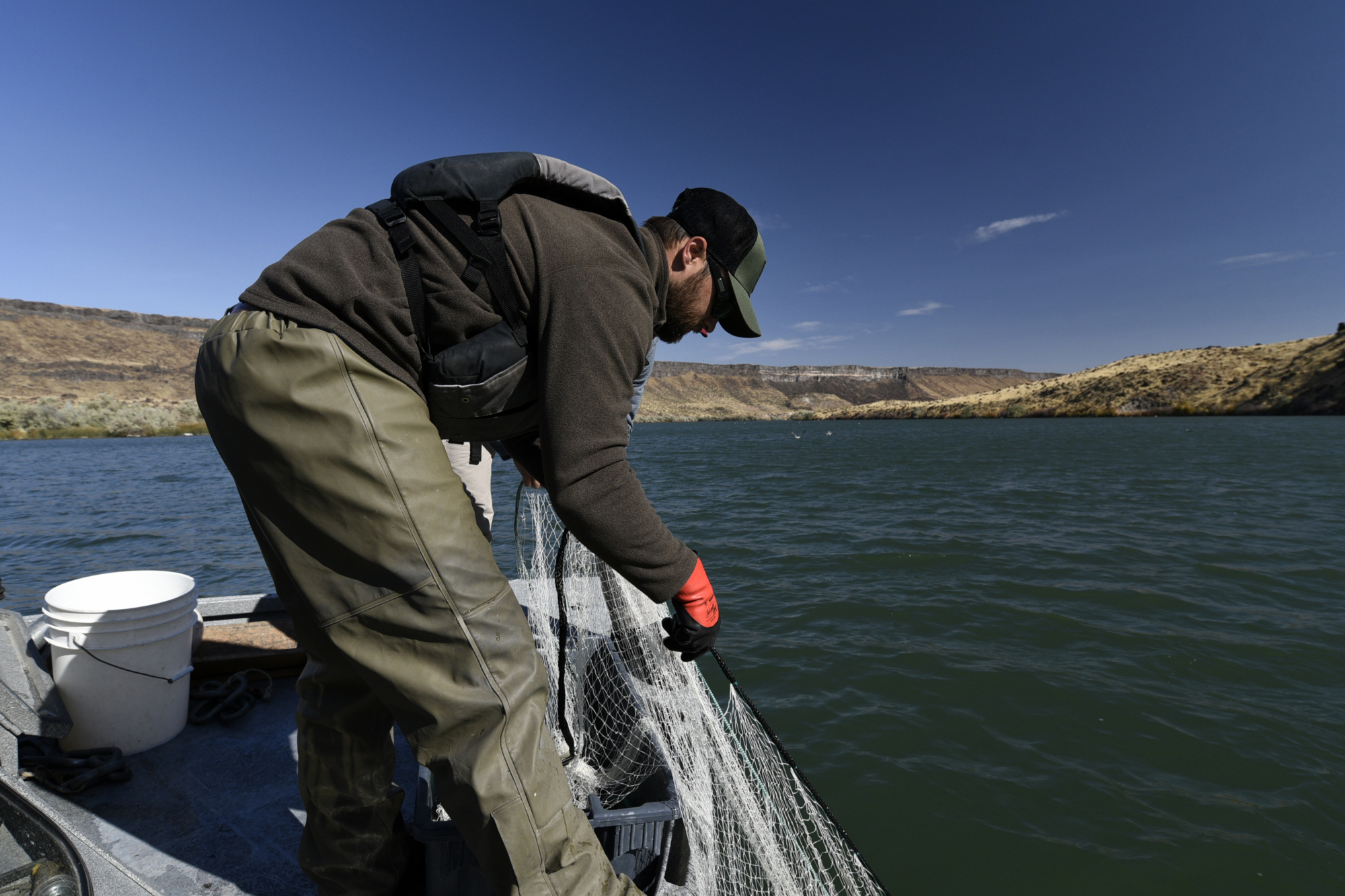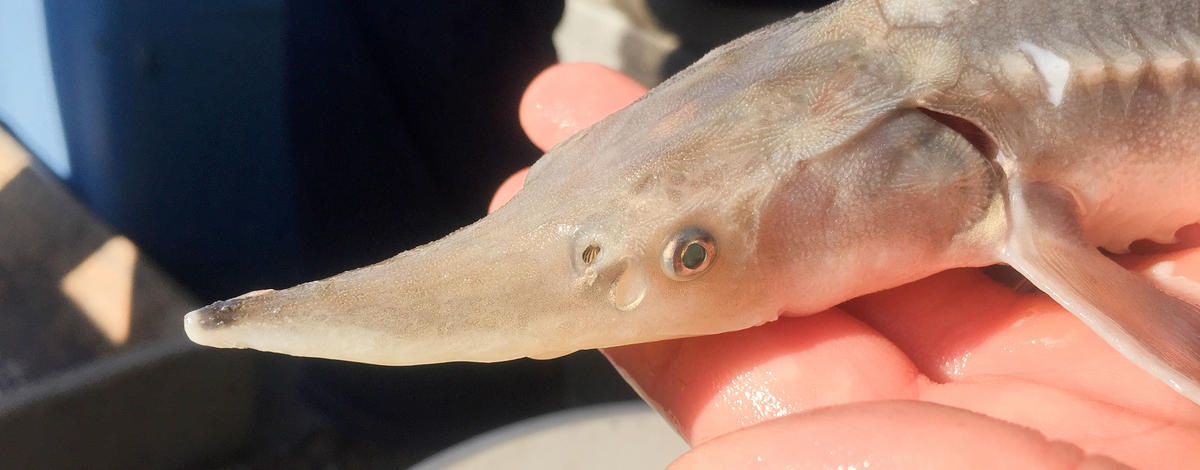
A baby sturgeon captured in October 2017 above CJ Strike Reservoir. Young sturgeon have incredibly sharp scutes (bony plates) to protect them from predators. Young sturgeon can grow quickly when conditions are right. This one is about 5 months old.
2017 turned out to be a good year for the White Sturgeon in the middle Snake River. In the section between Bliss Dam and C.J. Strike Reservoir, sturgeon took advantage of the rare, high spring flows and spawned successfully. It's an exciting time because sturgeon might only reproduce successfully every three-to-five years, if that, depending on river flows.
In some sections of the Snake River, white sturgeon face an uncertain future because the habitat and river flows they need to reproduce have significantly changed as the river has been developed.
Sturgeon are found in the Snake River from Twin Falls to Lewiston. That’s a lot of river, but they only reproduce in two sections: below Bliss Dam and in Hells Canyon. The Snake River is one of the most dammed rivers in the country. Dams provide many benefits, such as irrigation for agriculture, electricity generation and lowering flood risk. But the benefits also come at a cost to migratory fish, including white sturgeon.

Doug Megargle (IDFG) and Riley Brown (ID Power) get ready to set a net in the Snake River in hopes of finding young white sturgeon. Netting is one way to understand what parts of the river young stugeon to better understand their migrations.
Sturgeon thrive in long sections of free-flowing rivers that have a variety of habitats. To reproduce successfully, sturgeon need high spring flows that cue fish to spawn and clean gravels to protect and incubate the eggs. Because of these spawning requirements and historic changes to the river habitat, successful spawning usually only happens when there are very high river flows. In most years, upstream dams capture most of the runoff, so flows in the middle Snake River don't get high enough for sturgeon to successfully spawn. The big 2017 snowpack brought enough water to fill the reservoirs and still deliver big flows needed to clean gravel and help young sturgeon survive.
Idaho Power Company does most of the sturgeon research in cooperation with Fish and Game in the middle Snake River as part of the company's license to operate dams and generate power. In summer of 2017, biologist captured newly hatched larval sturgeon as they drifted down the river. While that's a good sign, finding larval sturgeon doesn't necessarily mean successful reproduction. In many years, adult sturgeon spawn, but the tiny larval sturgeon don't survive unless river conditions are just right. Larval sturgeon are easy food for predators, or may starve if they drift into poor, slack-water habitat.

David Meyer carefully pulls up a net on the Snake River, hoping to find a tiny sturgeon. Dams and irrigation have altered the river flows so that in most years, sturgeon rarely reproduce successfully. Finding a baby sturgeon is a rare opportunity to learn about these special fish.
Surveys during fall showed this healthy new age class of young sturgeon survived and grew fast. By November, these young sturgeon were already 12-inches long, which is incredibly fast growth for a fish less than 6 months old. Once a sturgeon makes it to this stage, their survival to adulthood is very high, so we expect to see these fish in the river for years, if not decades, to come.

A baby sturgeon is carefully measured for length and girth to track growth rates before getting a tag. Each sturgeon will be tagged with a unique number to track growth, survival and movement throughout the Snake River.
After monitoring sturgeon in the middle Snake River for many years, biologists have a good sense for the recipe sturgeon need for spawning. River flows of at least 15,000 cubic feet per second below Bliss Dam combined with the right water temperatures in May and June seem to be the ticket. Unfortunately, this combination is happening less often. Idaho’s weather patterns are changing, and that is affecting the amount of snow and rainfall in the Snake River Basin. Dams can capture most of the runoff, so the high flows needed for spawning only occur in years with really big snow packs where runoff produced more water than the dams can hold. These changes mean the high spring flows needed to sustain sturgeon reproduction are happening with less frequency.

